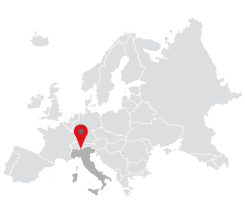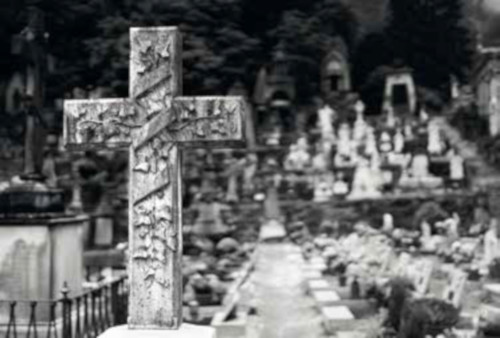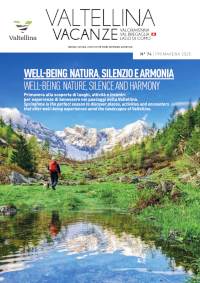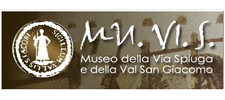One of Chiavenna&´s Gems - too often overlooked
You might be surprised just how many people take the time to visit cemeteries while they are on holiday or travelling. Of course the famed Cimetière du Père Lachaise in Paris often forms a part of visitors&´ itinerary, "home" as it is to the likes of Amadeo Modigliani, Oscar Wilde, Edith Piaf, Maria Callas and Jim Morrison to mention just a handful. The cimitero acattolico (or non-Catholic cemetery) in Rome was another "must" for your correspondent in order to see the graves of English romantic poets Percy Shelley and John Keats.
Yet closer to home here in Valchiavenna a quite remarkable example of a striking burial ground is at the heart of the town, close to the collegiate church of San Lorenzo dedicated to the saint as far back at 973. It&´s well worth noting amongst theì wealth of the town&´s "special places to visit". There may not be figures quite so illustrious as in say the Parisian equivalent but many leave a lasting impression. A friend I took there decades ago still asks me to say hello to her adopted "young soldier" who fell in the Great War. Striking architecture apart - vast family crypts, vaults and mausoleums - the final resting place for people from the valley - and not only - provides a place for calm, peace, contemplation and not a little beauty. In the foothills of the Alps and with a highly appropriate backdrop of the Parco Botanico Paradiso it offers gentle time for reflection.
Centuries ago the wealthy Chiavenna residents and clergy were interred within the "porticato", known locally as "I Monùmént" the cloistered area directly in front of the San Lorenzo church, and the current cemetery only began to take shape from 1827 and saw only gradual development until later in the century. Today there&´s a vast array of architectural styles - some perhaps not to everyone&´s taste - but nevertheless hugely impressive, representing almost a documentary of the history of world art, and their quite different styles: from the ancient Egyptian of the Monti family, to the Mesopotamian artistry of the family Ogna, from the Greek of the Dolzino, the Romanesque of the Pestalozzi and Sironi tribes, and finally to the Gothic of the Ritter-Mùller.
But amongst the more modest graves another stood out. Anything but local. And - excuse me - partly because it&´s the only one in the cemetery with an epitaph written in English "In Dear Memory of rev. John M.E. ROSS, Anglican minister and Editor of "British Weekly", born at Rothesay (Scotland) 20th October 1870, died Chiavenna 3rd August 1925". The reverend journalist, a well- travelled man in his lifetime had left his London base in order to spend 3 weeks at the Palace Hotel in Maloja, very popular with the Brits at that time. The reverend had a history of lung problems and altitude had been recommended. But after just a few days he was taken ill and the attending Doctor Lemon advised he go down to Chiavenna where he occupied a room at the Hotel Conradi. Sadly he did not recover.
Henry Lunn, a fellow guest at the Palace would write later in a testament in the British Weekly: "Chiavenna is a small Italian town, situated cosily in the foothills of mountains, the cemetery is secluded in an amphitheatre with considerable rockfaces 200-300 feet high. It is the most beautiful cemetery as a location I have ever seen in my life. The entrance is through what the townspeople have aptly called &´the valley of remembrance&´, an avenue of cypress trees which have grown to a fine height, with one planted for every young man from Chiavenna who fell in the Great War&´. Which brings us back neatly to my friend&´s adopted "young soldier".ì And on a personal note I too, have many dear old friends within. After a reflective hour or two within the atmospheric grounds, you might just come away inspired.




















